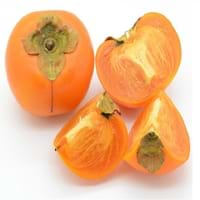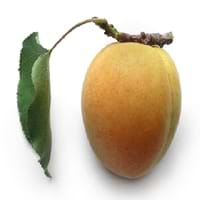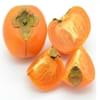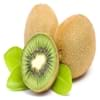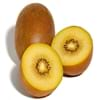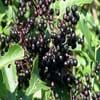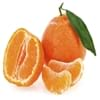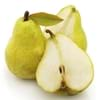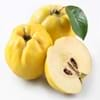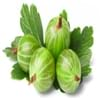Health Benefits
Cancer prevention, Heart care, Heat stroke treatment, Improves eye vision, Weight loss properties
Asthma treatment, Cancer prevention, Controls blood pressure, Digestive aid, Heart care, Maintains hormonal balance, Regulation of heart rate, Skin cleansing, Skin rejuvenation
General Benefits
Anti-inflammatory properties, Boosts immune system, Cures cough, Digestive aid, Fights against infections, Improves blood circulation
Boosts immune system, Controls blood pressure, Digestive aid, Eye care, Maintains healthy cholesterol level, Strengthens bones
Skin Benefits
Anti-aging benefits, Brightens and lightens complexion, Reduces wrinkles
Hydrates skin, Reduces wrinkles, Treatment of dark spots, Treatment of skin diseases
Hair Benefits
Promotes longer and healthier hair, Protects hair
Good conditioner, Regulates hair growth, Rejuvenates scalp, Softening mask, Treatment of dandruff
Allergy Symptoms
Abdominal pains, Anaphylaxis, Inflammation
Abdominal cramps, Anaphylaxis, Breathing difficulty, Diarrhea, Itching of mouth, Itching sensation in throat, Swelling of mouth, tongue or lips, Vomiting, Wheezing
Side Effects
Diarrhoea, Might affect blood pressure level
Dizziness, Headache, Nausea, Vomiting
Best Time to Eat
Along with meal, As a snack in the late afternoon, Don't consume at night and before bed, Morning time (before lunch)
Best if taken as a breakfast (or empty stomach), As a snack in the late afternoon, Don't consume at night and before bed, Eat the fresh ones, avoid mixing with any other foods, don't eat after meal.
Vitamin B5 (Pantothenic Acid)
Not Available
Vitamin C (Ascorbic Acid)
Vitamin K (Phyllochinone)
Calories in Fresh Fruit with Peel
Calories in Fresh Fruit without Peel
Not Available
Not Available
Calories in Frozen Form
Not Available
Not Available
Calories in Canned Form
Not Available
Type
Berry, Tree fruit
Tree fruit
Season
Autumn, Winter
Summer
Varieties
Fuyu, Jiro, Gosho, Suruga, Hiratanenashi, Hachiya, Aizumishirazu, Yotsumizo, Yokono, Costata, Ormond and Tamopan
Gold Cot, Tilton, Wenatchee, Goldbar, Gold Kist, Tomcot, Harcot, Brittany Gold, Harglow, Hunza, Moorpark, Patterson and Royal Rosa
Color
Orange, Red, Yellow
Orange, Yellowish-orange
Inside Color
Orange
Yellow
Taste
Sweet
Smooth, Sweet
Origin
Burma, China, India, Japan
China
Soil Type
Sandy loam, Well-drained
Well-drained
Climatic Conditions
Can tolerate wide range of climates
Dry, Hot
Facts about
- Unripe persimmons contain lots of tannin which is used to brew sake & to preserve wood in Japan.
- A small non-edible fruit of persimmon tree is crushed with water, the solution is painted on paper & used to repel mosquitoes.
- 9 Jan is considered as the National Apricot Day.
- Apricots have been around for more than 4000 yrs.
- In latin, the meaning of apricot is 'precious'.
- 95% of apricots in the US are produced by California.
Spirits
Not Available
Yes
Cocktails
Not Available
Yes
Top Producer
China
Turkey
Other Countries
Azerbaijan, Brazil, Israel, Italy, Japan, Pakistan
Algeria, Egypt, France, Iran, Italy, Morocco, Pakistan, Spain, Uzbekistan
Top Importer
United States of America
United States of America
Top Exporter
Japan
France
Botanical Name
Diospyros kaki
Prunus armeniaca
Synonym
Not Available
Not Available
Subkingdom
Tracheobionta
Tracheobionta
Division
Magnoliophyta
Magnoliophyta
Class
Magnoliopsida
Magnoliopsida
Subclass
Dillenhidae
Rosidae
Family
Ebenaceae
Rosaceae
Species
D. kaki
P. armeniaca
Generic Group
Not Available
Rose
Difference Between Japanese Persimmon and Apricot
We might think that Japanese Persimmon and Apricot are similar with respect to nutritional value and health benefits. But the nutrient content of both fruits is different. Japanese Persimmon and Apricot Facts such as their taste, shape, color, and size are also distinct. The difference between Japanese Persimmon and Apricot is explained here.
The amount of calories in 100 gm of fresh Japanese Persimmon and Apricot with peel is 70.00 kcal and 48.00 kcal and the amount of calories without peel is Not Available and Not Available respectively. Thus, Japanese Persimmon and Apricot belong to Low Calorie Fruits and Low Calorie Fruits category.These fruits might or might not differ with respect to their scientific classification. The order of Japanese Persimmon and Apricot is Ericales and Rosales respectively. Japanese Persimmon belongs to Ebenaceae family and Apricot belongs to Rosaceae family. Japanese Persimmon belongs to Diospyros genus of D. kaki species and Apricot belongs to Prunus genus of P. armeniaca species. Beings plants, both fruits belong to Plantae Kingdom.
